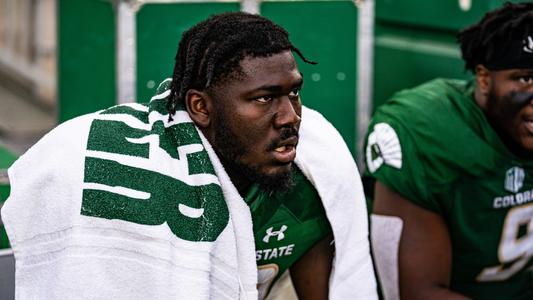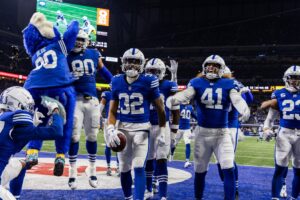
The Indianapolis Colts achieved a franchise record for sacks in the previous season, totaling 51. None of their players reached double-digit sacks individually, but four managed at least eight. Leading the pack was Samson Ebukam, a free-agent acquisition from the previous season, who notched nine and a half sacks.
Aside from Ebukam, no other player on the team accumulated more than four sacks. Justin Houston was the last Colt to achieve double-digit sacks in 2019, registering 11. Despite the record-setting performance, DeForest Buckner remained the primary focus of opponents along the defensive line due to his formidable presence.
The Colts have grappled with a lack of consistent edge pressure for some time now. The last instance of two players reaching double-digit sacks in a single season dates back to 2010, courtesy of Dwight Freeney and Robert Mathis. Freeney also secured back-to-back seasons with double-digit sacks in 2009 and 2010. General Manager Chris Ballard has endeavored to address this issue through the draft, selecting Tyquan Lewis in the second round of the 2018 draft, Dayo Odeyingbo in 2021, and Kwity Paye in the first round of the same year. However, the desired impact has yet to materialize.
In light of these considerations, here are five defensive end prospects the Indianapolis Colts should focus on in the upcoming 2024 NFL Draft.
Laiatu Latu – UCLA
6-foot-5, 25 9lbs
Laiatu Latu emerges as a standout edge prospect in this year’s draft, renowned for disrupting offensive game plans during his tenure at UCLA. With consecutive seasons boasting double-digit sacks, he garnered All-American honors and clinched the 2023 Pac-12 Defensive Player of the Year title. Primarily deployed as an outside linebacker in his final college campaign, Latu exhibits versatility, equally adept at rushing the quarterback from a traditional defensive end position.
/cdn.vox-cdn.com/uploads/chorus_image/image/72899113/1781178509.0.jpg)
However, lingering concerns arise from a past neck injury sustained during his time at Washington. While UCLA’s medical staff cleared him for play, the decision from the Huskies’ doctors raises questions that the Colts must carefully assess. Latu’s physical attributes, including size, arm length, and pursuit along the boundary, are considered average, though there’s room for improvement in his ability to hold up against the run and maintain leverage in his pass rush.
Drawing comparisons to T.J. Watt, Latu’s relentless pursuit of the quarterback shines through in his tape. Despite some limitations, such as average coverage skills, he displays glimpses of proficiency in tight areas, exemplified by his two interceptions. Notably, Latu demonstrates above-average lateral movement and athleticism, effectively timing his rushes to disengage from blockers. While he heavily relies on his bull rush and speed, there’s a need for him to diversify his pass rush repertoire. Nonetheless, his speed stands out as an instant asset at the NFL level.
Jared Verse – Florida State
6-foot-4, 254 lbs
The Indianapolis Colts could potentially select Jared Verse, marking one of the most prominent defensive end prospects from Florida State since Bjorn Werner. Notably, there are parallels between Verse’s tape and that of Kwity Paye, a current Colts defensive end. While Verse exhibits greater explosiveness and consistent bursts off the snap compared to Paye, there are moments where his drive appears lackadaisical, leading to easier blocks.
Comparable to LaMarr Woodley, Verse’s likening isn’t detrimental to his potential as a draft pick or NFL player, although Woodley’s sack production might not be viewed favorably. Additional concerns arise from Verse’s tendency at times to create rushing lanes for opposing runners or quarterbacks during his pursuit of the passer. Moreover, his tackling proficiency doesn’t consistently match his strength and athleticism, despite decent tackle-for-loss numbers in college, raising doubts about their transferability to the NFL.
Consequently, there’s a clear need for refinement in Verse’s pass-rushing technique. While he showcases a relentless motor and an explosive first step, particularly effective with his bullrush, his secondary moves require development, which NFL coaching could facilitate. Nevertheless, his strength remains a notable asset, enabling him to contend with larger opponents and deliver impactful blows on the field.
Mohamed Kamara – Colorado State
6-foot-1, 248 lbs
It’s often said that scouts have a knack for uncovering talent, and Mohamed Kamara from Colorado State exemplifies this sentiment. Despite not hailing from a Power Five conference, Kamara’s impressive stats at Colorado State, boasting 45.5 tackles for loss and 30.5 career sacks, catch the eye. Watching his tape evokes comparisons to Robert Mathis, with both players sharing a similar stature that renders them undersized by NFL defensive end standards.

This size discrepancy is perhaps the primary critique against Kamara, likely relegating him to a Day 2 or Day 3 draft selection. To elevate his game, he must diversify his pass-rushing repertoire beyond relying solely on his speed and powerful hands. At times, his momentum in pursuit of the quarterback, coupled with the tackle’s assistance, overshoots the mark, necessitating improvement in his recovery and pursuit.
A spin move could serve as an ideal complement to Kamara’s primary rush, capitalizing on his quickness off the snap and leveraging his strength and nimble footwork. While his development remains a work in progress, Kamara’s potential upside is undeniably intriguing, offering promise for his future in the NFL.
Dallas Turner – Alabama
6-foot-3, 247 lbs
Dallas Turner presents an intriguing prospect, though his fit within the Indianapolis Colts’ current defensive scheme may not be seamless. While ideally suited for a 3-4 defensive alignment as a rushing outside linebacker, Turner possesses enough skill, athleticism, and talent to excel as a pass rusher with his hand on the ground. However, his slightly undersized frame may not align with the traditional NFL defensive end archetype.
Turner’s technique and abilities require refinement, a task that NFL coaching can address effectively. Additionally, bulking up would enhance his durability over a full season and fortify his ability to defend against the run. In terms of run defense, he relies heavily on his speed to pursue rushers rather than leveraging his strength in confined spaces. Although he maintains consistent effort, there are instances where he lacks engagement when not directly involved in the play.
Notably, Turner’s preferred pass-rushing move capitalizes on his explosive first step and speed, often converting them into a power rush. His progression throughout his college career, evident in both his technique and performance on a weekly basis, is encouraging. With his rapid initial burst, Turner can disrupt plays early, frequently causing tackles to lose footing or thwarting running backs in the backfield. While he displays adequate coverage skills in space or the flat, he’s not ideally suited for an outside linebacker role.
Cedric Johnson – Mississippi
6-foot-3, 260 lbs
Cedric Johnson is projected to be selected no earlier than Day 2 of the draft, with the understanding that he represents a developmental project for whichever team chooses him. While some scouts acknowledge his NFL-caliber physique and appearance, concerns linger regarding his collegiate production, having amassed 19 career sacks without exceeding six and a half in any single season.
One of Johnson’s notable drawbacks is his tendency to approach quarterback rushes with a singular speed, lacking variety and creativity in his approach. Despite possessing good size, he frequently allows opposing tackles to engage him directly, compromising his effectiveness. Although he exhibits flashes of violent hand usage, his consistency in this regard is lacking, often engaging in prolonged hand-fighting instead of focusing on making tackles—an issue likely stemming from his limited array of pass-rushing moves.
However, Johnson’s strong lower body provides a foundation for his pass-rushing capabilities, aiding him in setting the edge and driving blockers backward. His lower-body strength enables him to effectively sink and redirect blockers during his rush. Notably, he demonstrates proficiency in executing a powerful bull rush and a wide rush off the snap. With refinement under NFL coaching, his bull rush could become even more formidable. Additionally, Johnson exhibits a commendable spin move complemented by impressive closing speed when pursuing quarterbacks.
While Chris Ballard, the general manager of the Indianapolis Colts, has encountered challenges in finding success at the defensive end position during his tenure, there’s optimism that this year could mark a turning point. In recent drafts, Ballard has notably excelled in addressing two other critical positions: quarterback and left tackle.
Despite previous setbacks in bolstering the defensive end position, Ballard’s successful acquisitions at quarterback and left tackle in the last two drafts demonstrate his ability to identify and secure key talent. With this track record of success in mind, there’s hope among Colts fans that Ballard will finally strike the right balance and find a solution to their defensive end woes in the upcoming draft.







